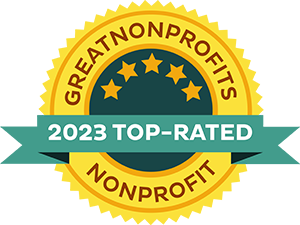National Volunteer Month in the United States is observed in April every year, and it is the perfect time to recognize those who give their time and energy to help others. Volunteering is believed to have existed throughout human history. In many cultures, the concept of volunteering was intricately linked to religious beliefs and traditions. For example, in ancient civilizations, there were religious and civic organizations that provided assistance to the poor and vulnerable members of society. With our interfaith roots, we have long talked about how all the world’s religions have a common tenet of helping others as a means of promoting greater compassion, kindness, and social harmony.
Additionally, volunteerism has played a significant role in American society. In fact, the founding principles of the United States, including the idea of civic duty and the importance of individual responsibility, are closely tied to volunteerism. With the pandemic, our network saw a reduction in our volunteer ranks, understandably given the higher health risks to our older adult volunteers. A Fidelity Charitable survey found that two-thirds of volunteers before the pandemic reduced or eliminated their time spent volunteering. In a 2022 year-end survey, Tobi Johnson and Associates’ found that volunteerism has rebounded to pre-pandemic rates.
Recognizing this upheaval in volunteerism, it seems wise to review a few trends in volunteerism post-pandemic.
- Volunteering is becoming more skills-based: more organizations are seeking volunteers with specific skills, such as web design, social media management, or data analysis. This shift toward skills-based volunteering allows volunteers to make a more meaningful impact, while also developing their own skills and advancing their careers.
- Virtual volunteering is on the rise: it’s easier than ever to volunteer from anywhere in the world. Virtual volunteering allows people to use their skills and expertise to help organizations without ever leaving their homes. This not only makes volunteering more accessible, but also helps organizations reach a wider pool of volunteers.
- Volunteer commitment is more flexible: many volunteers are now looking for shorter-term or episodic volunteering opportunities, rather than committing to long-term service. This allows volunteers to try out different causes and organizations, and find ways to make a meaningful impact even if they have limited time to devote to volunteering.
- Volunteerism is becoming more diverse and inclusive: there is growing recognition that volunteerism must be inclusive and accessible to people of all backgrounds and abilities. Many organizations are taking steps to ensure that their volunteer programs are welcoming to diverse volunteers, and that volunteers feel valued and respected for their contributions.
Overall, these trends reflect a growing recognition of the value and importance of volunteerism in addressing social problems, building stronger communities, and promoting individual and collective well-being. They also reflect the changing needs and preferences of volunteers. Shepherd’s Centers need to adapt in this evolving environment.
There is an opportunity for our network to not only celebrate current volunteers but also to recruit new volunteers to join our cause, give back to their communities, and make a positive impact in the lives of others. We applaud and celebrate the tens of thousands of volunteers with the Shepherd’s Centers Network. We see first-hand how a single individual can make a significant difference in the lives of others.
Sarah Cheney



